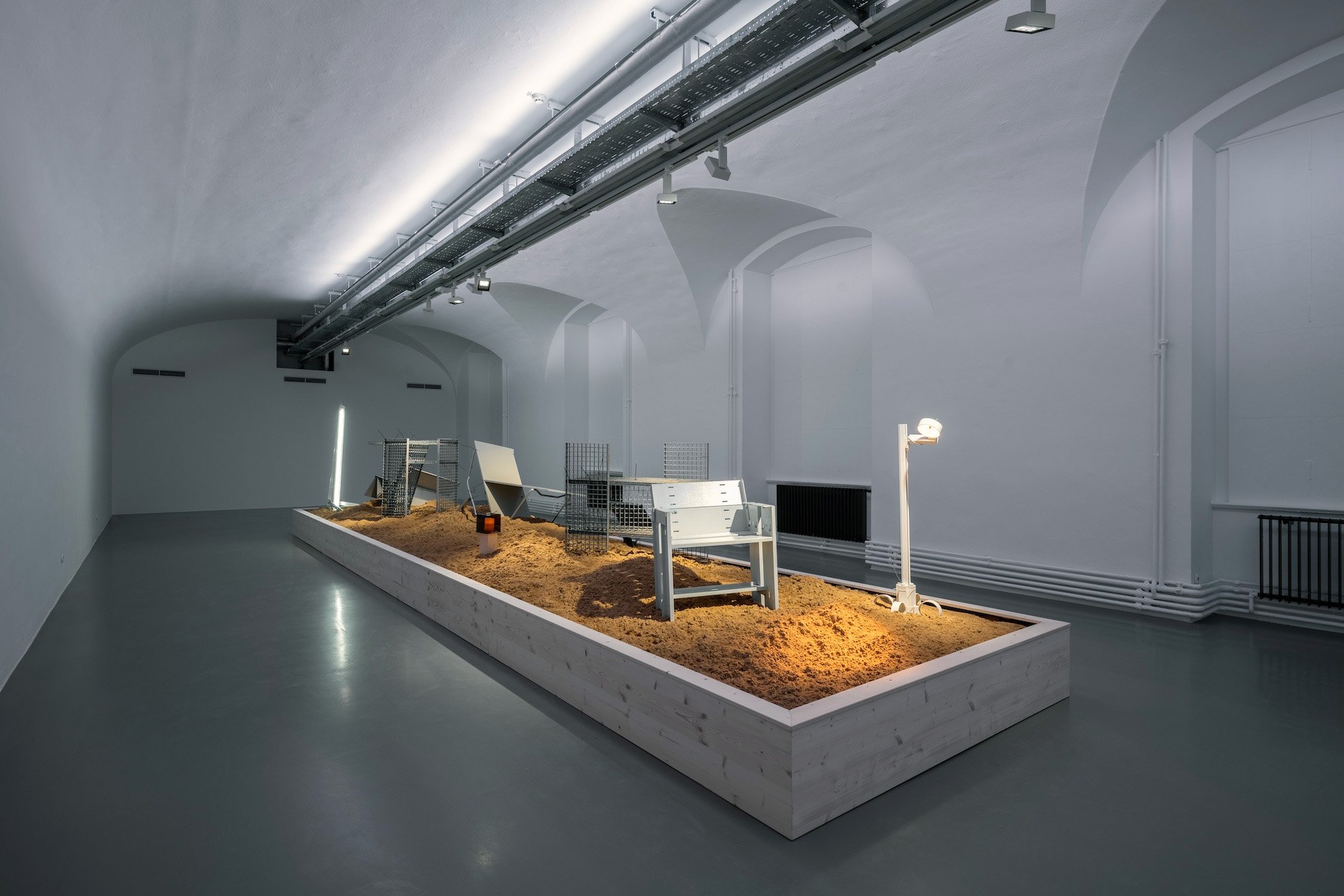Anton Defant
Anton, please introduce yourself:
Hi, my name is Anton Defant, a designer working in the intersecting fields of furniture, scenography, and sculpture.
Lotti Rail_Modular clothing installation
#1 Your work moves in the transitional area between product design and sculpture. How does this interdisciplinarity influence your approach to new projects?
I would describe my practice as substance-oriented. I try to develop conceptual answers to a wide range of questions. If it’s a functional question, I create a functional answer. If it’s emotional, critical, or of an undefined origin, I aim to craft a response that fits those fields. Some might describe this as an artistic approach.
#2 Your designs are often characterized by subtle humorous elements. What role does humor play in your design philosophy, and how do you integrate it into your objects?
Humor is a subtle factor that interests me a lot. I like fun and see humor as an indicator of being close to elemental feelings.
It can be HAHA or just a sense of wonder — this is what attracts me when it comes to the presence of objects.
Camo_Multifunctional furniture
#3 You have been skating since the age of 13. How has this passion shaped your creativity and understanding of design?
Skateboarding teaches you to see objects and their functions very diverse. It challenges you to find stylish yet technically challenging movements. Filming, music, style, behavior — skateboarding creates a little microcosm of self-curation. It’s not far from translating these ideas to other fields as well.
#4 Your work with recycled materials and waste takes sustainability to an experimental level. How do you choose these materials and how do they influence the aesthetic and functional design of your furniture pieces?
I don’t consider myself a sustainable designer, but I think my approach is accidentally sustainable. I try to work in small batches or create one-offs. The projects I started with my dear friend Benjamin Nagy during university dealt with waste and were driven by a specific kind of boredom.
We were bored with the illusion that designers or design students are omnipotent, snapping their fingers to make materials morph and connect. This felt like a false path that often leads to a dead end of self-expressionism. In our project “Mayfly,” we wanted to subordinate ourselves to the materials, finding solutions within their constraints. What’s better for this than discarded materials? They’re often useless but still functional, offering a chance to transform and have fun while escaping generic eclecticism.
Mayfly_Together with Benjamin Nagy. © Werkstatt für digitale Fotografie der Universität für angewandte Kunst Wien
#5 Your folding sofa ‚Ballast‘ is described as an experimental furniture design. What was the inspiration behind this design, and what challenges did you face in its realization?
This particular design came from observing how overly sophisticated camping furniture and the housing market in big cities are starting to talk about the same “environment.” Ever-changing spaces.
After deciding to make space-independent furniture, the main challenges were pattern-making and the longevity of the fabrics.
#6 You work in a workshop cooperative in Arno Brandlhuber‘s San Gimignano Lichtenberg project. How does this environment influence your creative processes and your projects?
That’s true — I love this place for its conversations and diverse perspectives. My colleagues work on very different projects and come from different backgrounds. In such a beautiful space, it’s easy to take yourself and your practice seriously, even if you’re spending weeks gluing together plastic pipes to create a model, haha.
Ballast_foldable Chair & Sofa © Werkstatt für digitale Fotografie der Universität für angewandte Kunst Wien
#7 What themes or materials would you like to explore in the future, and how would you like your designs to be perceived in the design world and have a lasting impact?
I am currently interested in the theatricality of contemporary design — the way the free market has shifted the functions and appearances of many things into obscurity, turning them into a kind of hide-and-seek game of materials and intentions. In effect, this topic of alienated design, which for me, especially in times of social media, often deals with 'the stage' of domestic spaces, is very intriguing, offering an interesting spot to reveal the wonderfully and frighteningly twisted logics of contemporary consumer culture.
In the long run, I hope to establish a practice that fuses honestly crafted and functional objects with self-referential elements,
allowing me to find alternative ways of expressing and defining the term 'design,' while still keeping up with paying the bills.
#8 How does your environment influence your work?
My environment is deeply connected with my work, and vice versa.
If I wanted to be a bit dramatic, I’d say that if you liberate “work” from its classical conception, both environment and work together describe a larger entity.
Skylight_Human centric day light panel, wood frame, curtains
#9 Three things that inspire you at the moment:
UL 6_in progress
Empty billboards and lightbox structures, riding my bicycle, and failing to come up with new ideas.
#10 What do you currently read, watch, listen to?
I’m reading The Dawn of Everything by David Graeber, watching Atlanta by Donald Glover, and listening to Christmas songs.
Mfpen, Flagship store_Carrier (Express), Picture frames, Tool Box © Michael Falgren










































